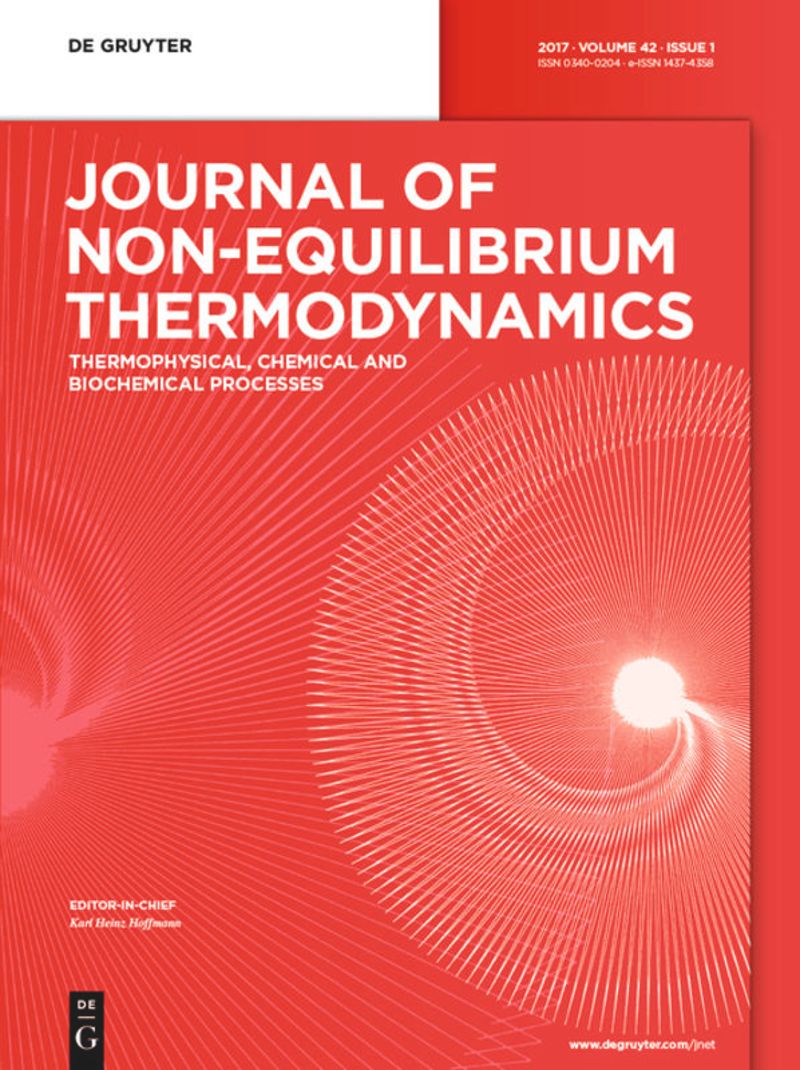Oldroyd-B纳米流体在膨胀通道中的jeffrey - hamel流动扩展及热分析
IF 4.3
3区 工程技术
Q1 MECHANICS
引用次数: 5
摘要
我们提出了一个新的理论模型来研究非牛顿Oldroyd-B纳米流体在膨胀通道中的压力驱动流动。根据动量守恒定律和傅里叶传热原理,结合布昂焦尔诺纳米流体模型,建立了动量场和温度场方程。对粘弹性Oldroyd-B流体在水平、收敛和发散通道中的流动进行了数值研究,收集了逐点的应力数据(即剪切应力和流场)。粘弹性流体的本构模型采用Oldroyd-B模型来表征流体的流变特性。将流体流动方程转化为非线性方程组,并通过MATLAB程序采用龙格-库塔布彻法进行数值求解。通过广泛的数值计算,探讨了许多新出现的流动参数对流动和传热特性的影响。在会聚流动中,雷诺数和通道角的增加导致流速分布的增加,表明回流被消除。随着缓速参数的增大,速度明显减小。此外,Oldroyd-B纳米液体文献通过布朗运动和热泳参数得到提升,而纳米颗粒浓度的行为则相反。将Oldroyd-B流体的速度场与粘性流体的速度场进行了比较,并将其作为极限实例进行了跟踪。在比较中,聚合物溶液的分析结果与牛顿流体进行了比较。本文章由计算机程序翻译,如有差异,请以英文原文为准。
Jeffery-Hamel flow extension and thermal analysis of Oldroyd-B nanofluid in expanding channel
Abstract We present a novel theoretical model to investigate the pressure-driven flow of a non-Newtonian Oldroyd-B nanofluid in an expanding channel. The momentum and temperature field equations are developed on the bases of momentum conservation law and Fourier’s principle of heat transfer in conjunction with Buongiorno’s model of nanofluids. Numerical investigations on a viscoelastic Oldroyd-B fluid flowing in horizontal, converging, and diverging channel have been carried out to collect point-by-point stress data i.e., the shear stresses and flow field). The constitutive model of a viscoelastic fluid adopting the Oldroyd-B model is considered to characterize the rheological behavior of the fluid. The flow equations are changed to a non-linear system and solved numerically using the Runge–Kutta Butcher method via MATLAB code. Numerous emerging flow parameters are probed for their effects on flow and heat transfer characteristics using extensive numerical computing. In converging flow, increasing the Reynolds number and channel angle leads to an increase in velocity distribution, indicating that backflow is eliminated. However, the velocity decreases as the retardation parameter increases significantly. Furthermore, the Oldroyd-B nano liquid literature is elevated by the Brownian motion and thermophoresis parameter, while for the concentration of the nanoparticles the behavior is contrary. The velocity field of an Oldroyd-B fluid is compared with the velocity fields for viscous fluids, which are then traced out as limiting instances. In comparison, the results for polymer solutions obtained in this analysis are compared with a Newtonian fluid.
求助全文
通过发布文献求助,成功后即可免费获取论文全文。
去求助
来源期刊
CiteScore
9.10
自引率
18.20%
发文量
31
审稿时长
1 months
期刊介绍:
The Journal of Non-Equilibrium Thermodynamics serves as an international publication organ for new ideas, insights and results on non-equilibrium phenomena in science, engineering and related natural systems. The central aim of the journal is to provide a bridge between science and engineering and to promote scientific exchange on a) newly observed non-equilibrium phenomena, b) analytic or numeric modeling for their interpretation, c) vanguard methods to describe non-equilibrium phenomena.
Contributions should – among others – present novel approaches to analyzing, modeling and optimizing processes of engineering relevance such as transport processes of mass, momentum and energy, separation of fluid phases, reproduction of living cells, or energy conversion. The journal is particularly interested in contributions which add to the basic understanding of non-equilibrium phenomena in science and engineering, with systems of interest ranging from the macro- to the nano-level.
The Journal of Non-Equilibrium Thermodynamics has recently expanded its scope to place new emphasis on theoretical and experimental investigations of non-equilibrium phenomena in thermophysical, chemical, biochemical and abstract model systems of engineering relevance. We are therefore pleased to invite submissions which present newly observed non-equilibrium phenomena, analytic or fuzzy models for their interpretation, or new methods for their description.

 求助内容:
求助内容: 应助结果提醒方式:
应助结果提醒方式:


